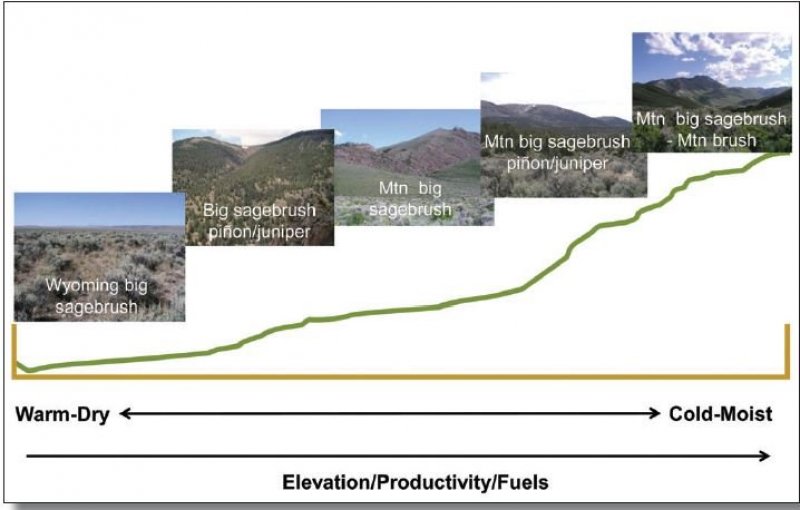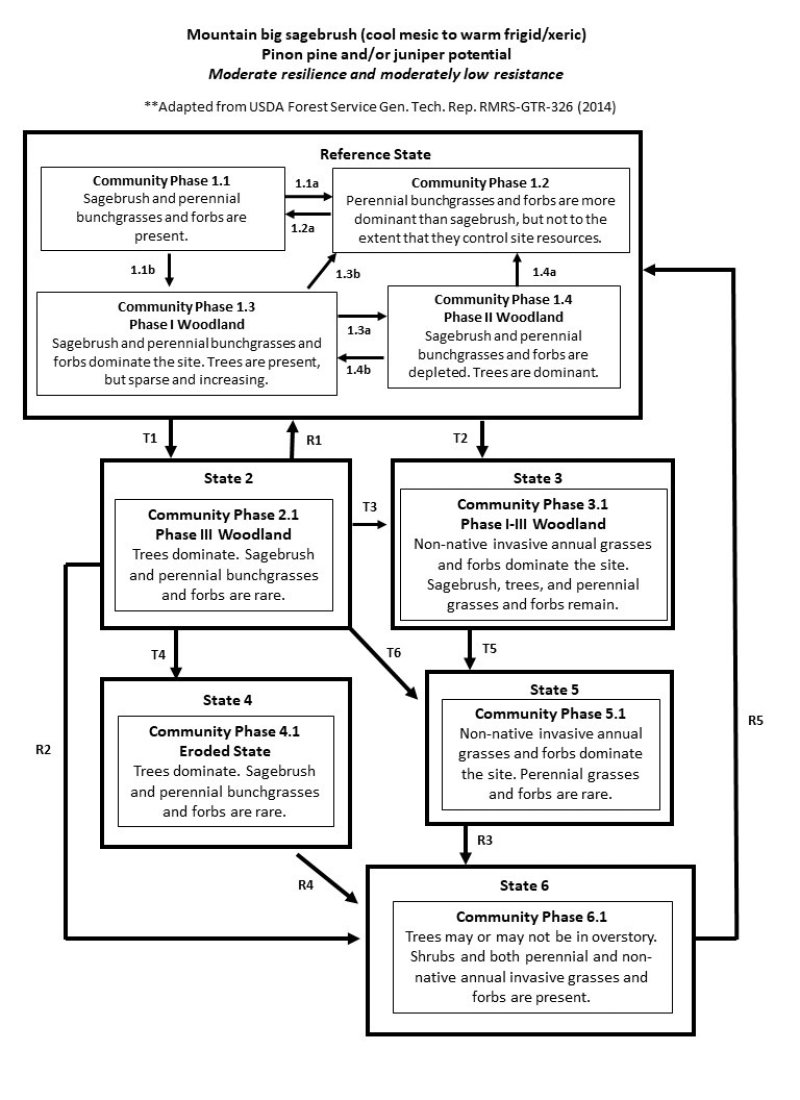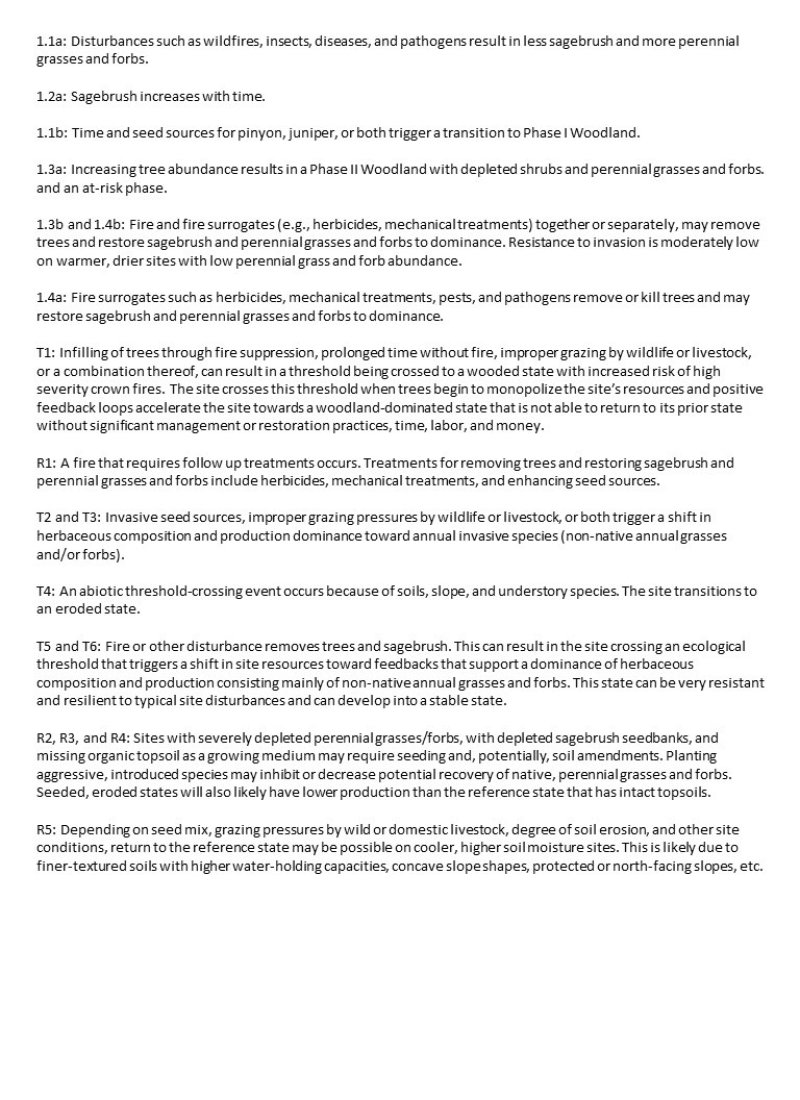Ecological site group R021XG907CA
Shallow Loamy
Last updated: 08/26/2024
Accessed: 12/21/2025
Ecological site group description
Key Characteristics
- Upland sites
- 12-30" ppt
- < 20" depth
- Loamy texture
Provisional. A provisional ecological site description has undergone quality control and quality assurance review. It contains a working state and transition model and enough information to identify the ecological site.
Physiography
This ESG is on mountains, hills, ridges, plateaus, and structural benches of MLRA 21 that receive 12 to 30 inches (305 to 760 millimeters) of precipitation. Slopes are 0 to 75 percent, but are typically between 30 to 75 percent.
Climate
The average annual precipitation in this MLRA is typically 9 to 25 inches (241 to 635 millimeters). It is highest, up to 57 inches (1,450 millimeters), in small areas at high elevations on the western and southwestern edges of this MLRA. Other higher precipitation zones are in the scattered mountain ranges throughout the rest of this area. Most of the rainfall occurs as low- or moderate-intensity Pacific frontal storms during the winter. At the higher elevations, rain generally turns to snow. Snow may fall at the lower elevations in winter but does not last. Summers are dry. The average annual temperature is 37 to 53 degrees F (3 to 12 degrees C). The frost-free period is from 70 to 185 days, with an average of 130 days.
Soil features
The soils of this ESG are varied, but they are typically loamy or ashy, and very shallow to shallow to either bedrock or a water-restricting horizon. They are well-drained with rapid permeability and moderate water-holding capacity due to the volcanic influences and finer loam textures. Therefore, these soils support mountain big sagebrush, although they are rather sparse and lower producing than mountain sagebrush sites on deeper soils.
Representative soil series include:
Nuss: Loamy, mixed, superactive, frigid Lithic Haploxerolls
Crazybird: Ashy-skeletal, glassy, frigid, shallow Vitrandic Argixerolls
Packwood: Loamy, mixed, superactive, mesic, shallow Xeric Argidurids
Sesdah: Ashy, glassy, frigid, shallow Vitrandic Argixerolls
Choptie: Loamy, mixed, superactive, frigid Lithic Haploxerolls
Hartner: Ashy, glassy, nonacid, frigid, shallow Vitrandic Torriorthents
Vegetation dynamics
Mountain big sagebrush is a late-seral dominant or "climax" species in steppe communities that can persist as a habitat-dominant species in late-seral stages in the absence of fire or other large-scale disturbances. Important large-scale disturbances in mountain big sagebrush communities include fire, herbivory, freeze-kill, snow mold, and drought. In the absence of disturbances, mountain big sagebrush communities may become dense, and stands adjacent to woodlands may succeed to woodlands.
Post-fire successional patterns in sagebrush communities are considered "predictable," although the composition of post-fire communities and rates of post-fire succession vary considerably depending on numerous interacting variables including pre-fire plant community and seed bank composition; site characteristics and management history; fire size, severity, and patchiness; and post-fire weather. Typically, annual herbaceous plant cover increases immediately after fire. Perennial grasses, forbs, and sprouting shrub species, if present, then increase and dominate for up to 20 years. Mountain big sagebrush may establish early in post-fire succession from the soil seed bank and from seed dispersed from surviving plants in unburned patches and the burn perimeter. Most mountain big sagebrush seedling establishment occurs within the first four years after fire, although it is influenced by several factors. After the first few post-fire years, mountain big sagebrush seedling establishment typically slows because of depleted soil seed banks and increased competition for resources with grasses and forbs.
Because mountain big sagebrush must establish from seed and has slower growth rates, it dominates the post-fire plant community much later in succession than grasses, forbs, and sprouting shrubs. Following the initial post-fire establishment period, secondary peaks in establishment occur when mountain big sagebrush individuals that established soon after fire mature and contribute seeds to subsequent establishment. Thereafter, establishment may be episodic. Canopy cover of mountain big sagebrush in mountain big sagebrush communities typically increases after fire or other disturbances. As mountain big sagebrush cover increases during succession, cover of grasses, forbs, and other shrub species declines. Shrub canopy cover in undisturbed mountain big sagebrush communities is typically 15 to 40 percent but can surpass 50 percent.
Early-, mid-, and late-seral mountain big sagebrush communities in Carbon County, Wyoming on moderately deep to deep loamy soils have less than 5 percent, 5 to 40 percent, and greater than 40 percent mountain big sagebrush canopy cover, respectively. Mid-seral communities in this area support the largest, most biodiverse wildlife populations.
On moderately deep to deep loamy soils in southeastern Oregon, research identified four general successional phases as follows:
• early-seral phase: grasses and forbs dominate and mountain big sagebrush seedlings are present (less than 1 percent mountain big sagebrush cover).
• mid-seral, open phase: grasses and forbs dominate and mountain big sagebrush is subdominant (1 to 10 percent mountain big sagebrush cover).
• late-seral, open phase: mountain big sagebrush, grasses, and forbs co-dominate (10 to 30 percent mountain big sagebrush cover).
• late-seral, closed phase: mountain big sagebrush is dominant (greater than 30 percent mountain big sagebrush canopy cover).
The time required for mountain big sagebrush communities to develop late-seral attributes is influenced by several factors and therefore varies substantially among sites. To model succession in mountain big sagebrush communities in southeastern Oregon, two assumptions were made: mountain big sagebrush populations begin with a single plant and double every two years, and it takes six years for a seedling to reach reproductive maturity. The modeled communities reached the late-seral, closed phase in about 31 years in the absence of disturbance. When disturbance effects from insects, voles, freeze-kill, snow mold, drought, and fire were added to the model, it took 33 years to reach that phase. Review and analysis of mountain big sagebrush post-fire recovery data shows that few sites fully recover (i.e., have mountain big sagebrush canopy cover that is equal to or greater than that on similar, unburned sites) before 25 years. While most sites studied (67 percent) had fully recovered after 25 years, sample size was small and variability was high for burns greater than 25 years old, and about a third of them had not fully recovered. Computations of post-fire recovery are complicated by variability in mountain big sagebrush canopy cover on unburned sites, which was 4 to 71 percent, and is influenced by several variables, including site characteristics, land use history, and successional stage.
Fire or other disturbance is not necessary to maintain mountain big sagebrush stands in a "relatively young, productive state" or to prevent them from becoming "decadent." Mean plant age of mountain big sagebrush on 33 relatively undisturbed sites on the Northern Yellowstone Winter Range, where vegetation cover averaged 14% (range: 3 to 39 percent), was 32 years, with only 12% of individuals over 50 years old and 5% over 60 years old. The average age of dead plants was 41 years old. The author of the study concluded that mountain big sagebrush plants established, matured, died, and were replaced within about 50 years. A 30-year study of a mountain big sagebrush stand in the Gravelly Mountains of southwestern Montana showed that mountain big sagebrush stands may persist indefinitely in the absence of large-scale disturbances. Based upon observations of the stand from 31 to 61 years after initial establishment, the author concluded that a dense stand of mountain big sagebrush "had to age sufficiently to break down into a more open stand before conditions were right for new plants to come in," and that "many plants died before the stand was open enough for the sunlight to reach the ground and permit seedlings to come in." No mountain big sagebrush seedlings were observed until 51 years after initial establishment.
Woodlands can expand into mountain big sagebrush communities when the interval between fires becomes long enough for trees to establish, mature, and dominate a site. Conifer expansion is most common in sagebrush communities on cool to warm, relatively moist sites, including mountain big sagebrush communities at high elevations. Where soil temperature and moisture regimes are suitable, mountain big sagebrush and other sagebrush plants can act as nurse plants, providing safe germination and establishment sites for junipers and pinyons.
Woodland succession has been categorized in the literature for mountain big sagebrush communities in three phases:
• Early-successional stage (Phase I): Shrubs and herbs dominate, and few trees are present.
• Mid-successional stage (Phase II): Trees co-dominate with shrubs and herbs.
• Late-successional stage (Phase III): Trees dominate, and shrubs and herbs are reduced.
A fourth, late-successional, closed stage or "mature" phase is sometimes included in woodland succession where trees are dominant, shrubs and herbaceous plant cover is minimal or absent, and shrubs are at least 90 percent dead. The time required to transition between phases in woodland succession is variable. In southeastern Oregon and southwestern Idaho, the development of western juniper woodlands in mountain big sagebrush and low sagebrush communities from the time of tree establishment to dominance (shift from Phase I to Phase III) varies from 80 years on cool, moist sites to greater than 120 years on warm, dry sites. Based on tree age chronology, the minimum time for western juniper stands to approach dominance on mesic mountain big sagebrush/Idaho fescue sites in Oregon and California is 60 to 70 years and nearly 80 percent of western juniper trees established within a 30-year period. Based on this and other data, Johnson and Miller developed a chart for mountain big sagebrush communities with varying productivity that hypothesizes the time necessary to transition from initial western juniper establishment to development of late-seral woodlands. The transition from mid-seral to late-seral woodlands causes a shift from shrub and herbaceous fuels to a predominance of tree canopy fuels, which influences fire behavior and severity.
Major Land Resource Area
MLRA 021X
Klamath and Shasta Valleys and Basins
Stage
Provisional
Click on box and path labels to scroll to the respective text.


